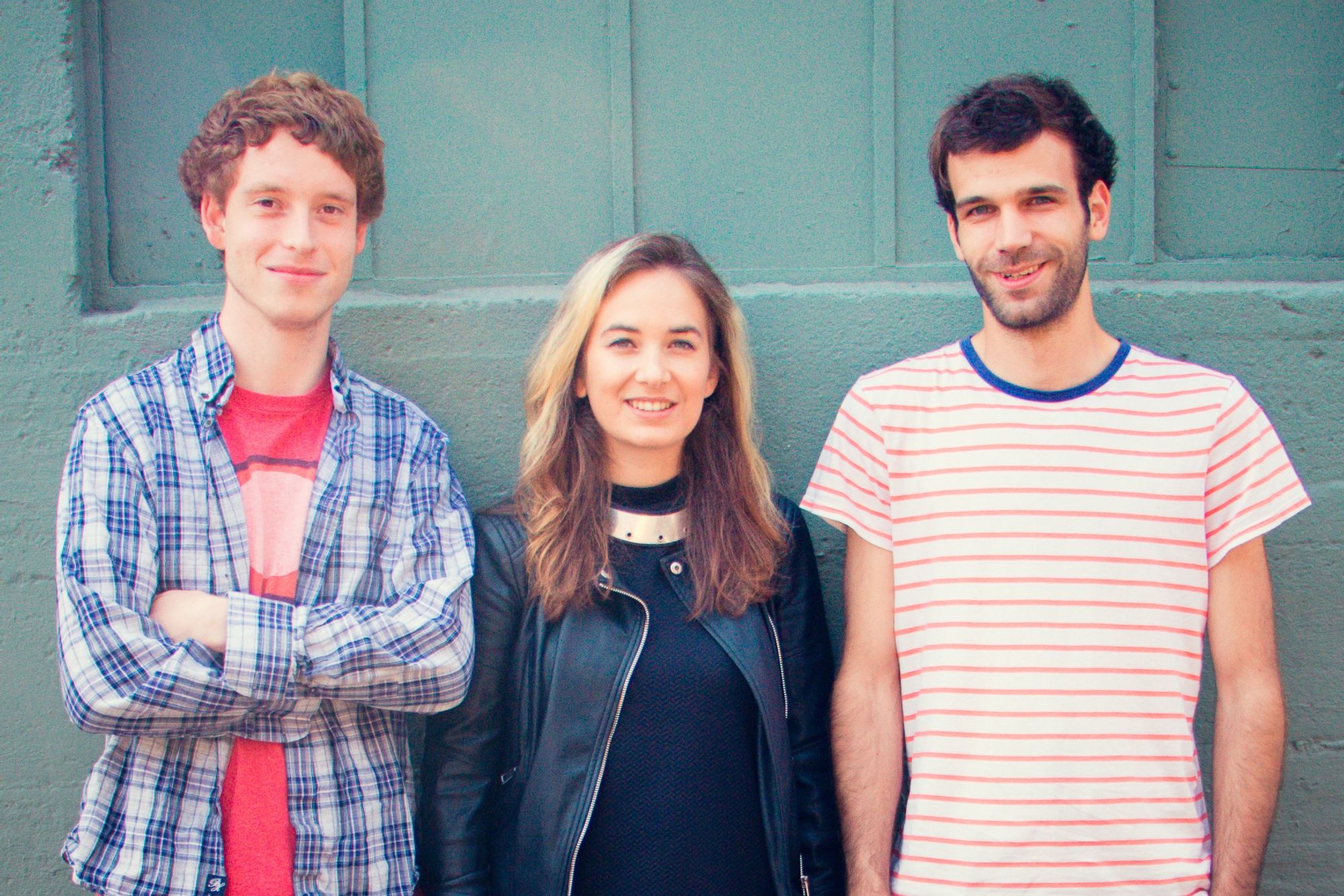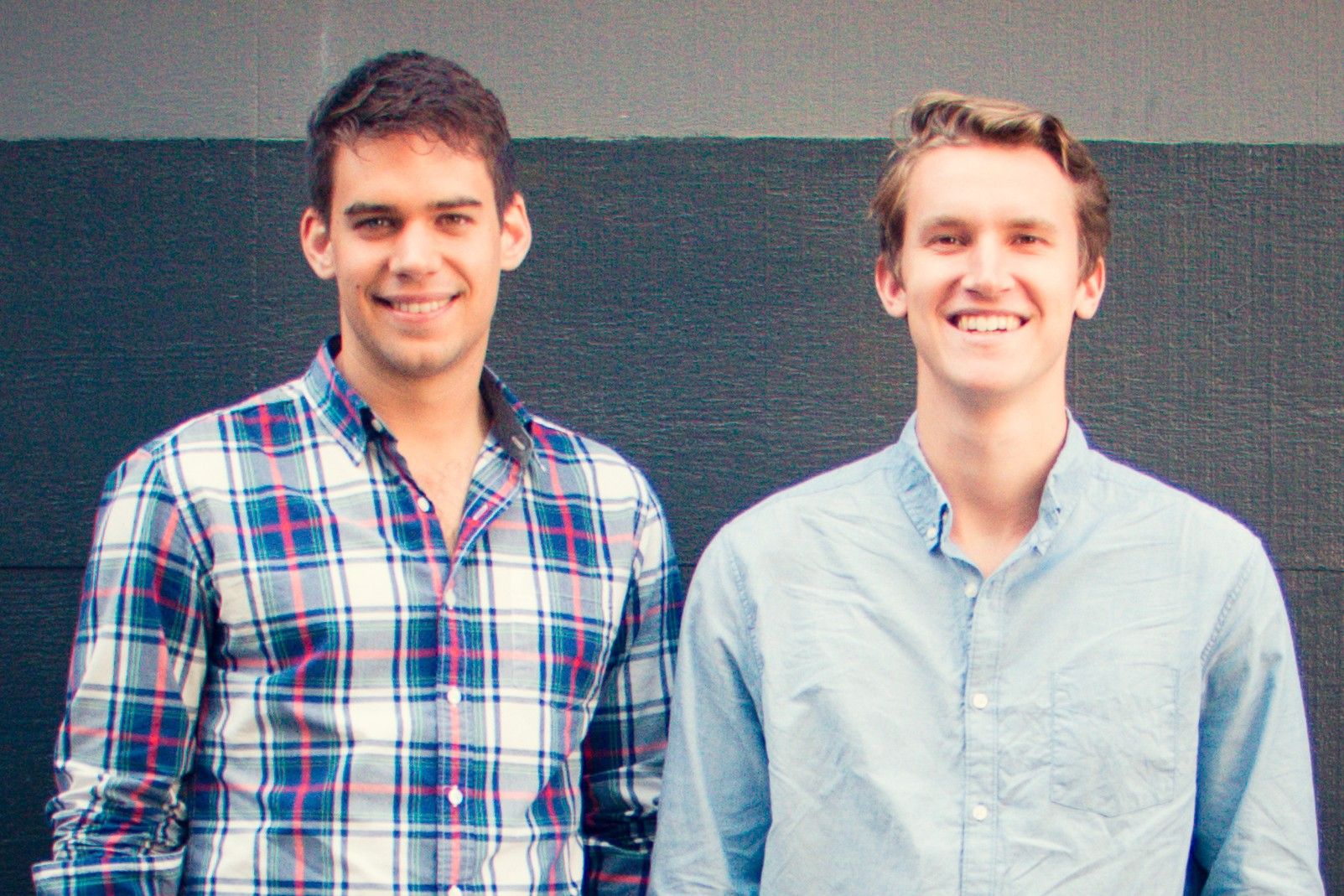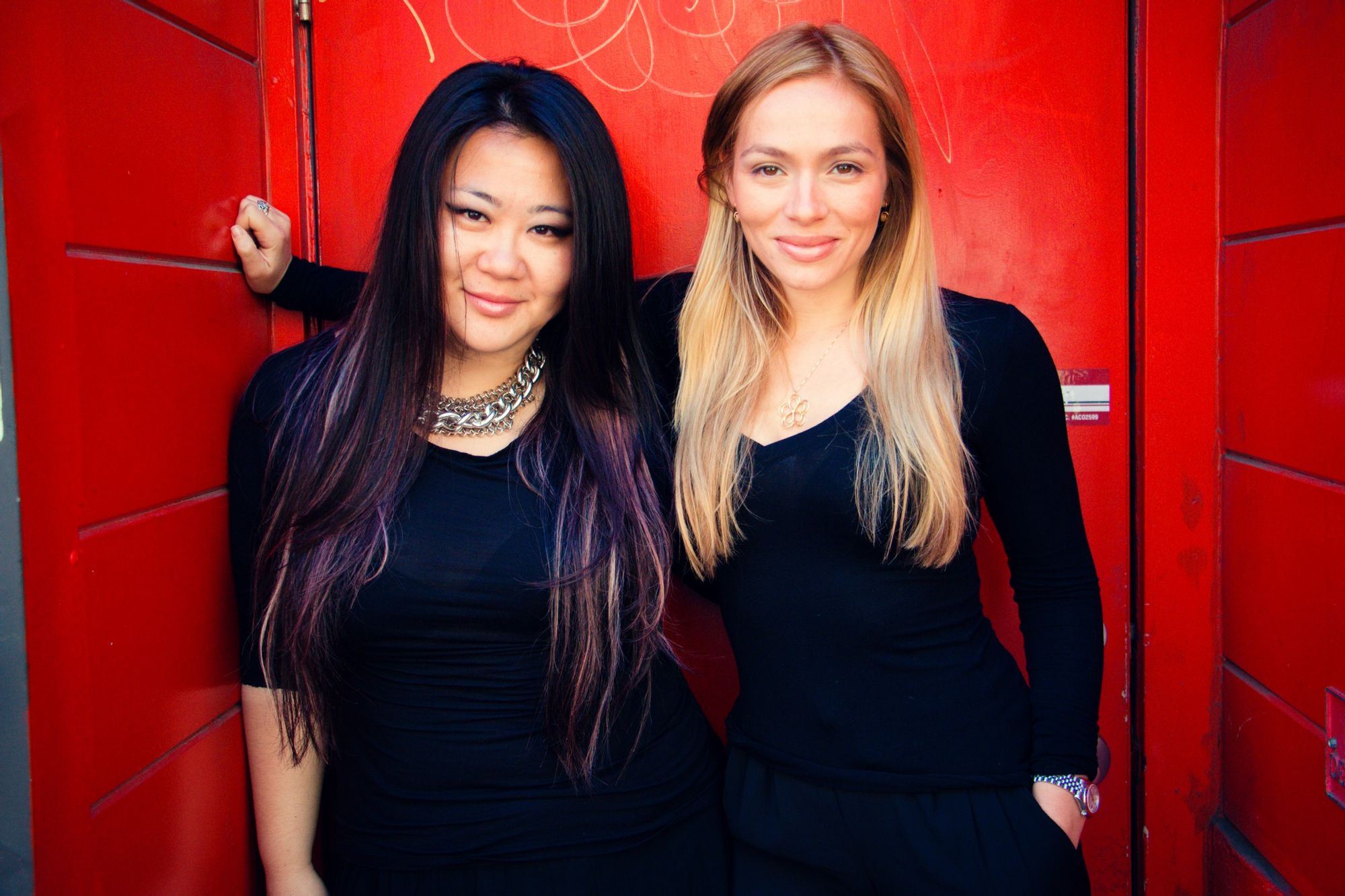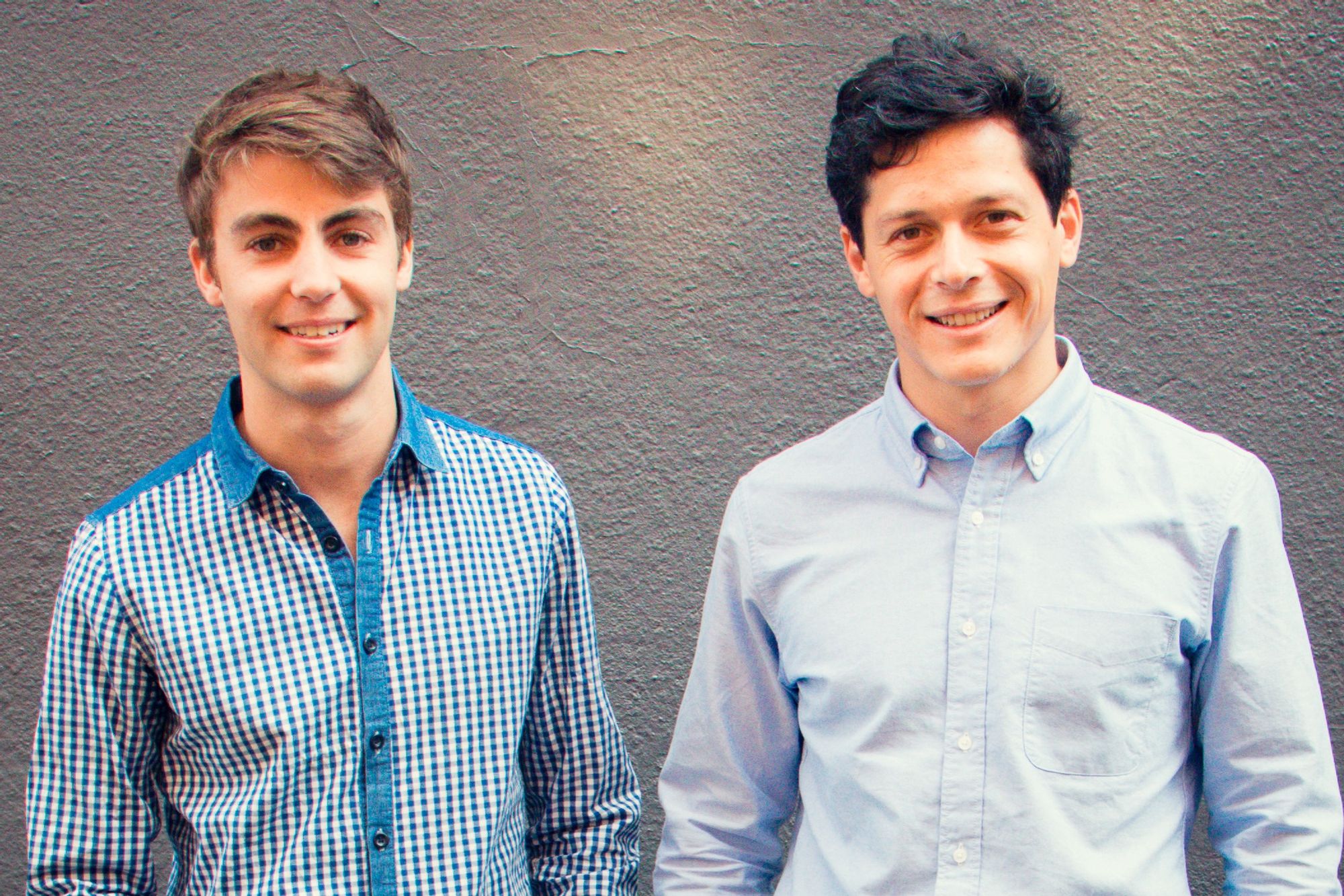Millennial Matter Five

Last week, we opened our garage door for the fifth time to welcome in six new companies and fifteen new entrepreneurs into our space to kick off the program with a weeklong design-thinking bootcamp. Over the next five months, they will be embarking on the rest of their Matter journey, testing, iterating, failing fast, and failing forward. All with the help of a community of dedicated, diverse mentors and partners.

At Matter, we believe the future of media is going to be created by entrepreneurs today. These entrepreneurs are motivated by the verbs of what media can accomplish — to connect, to inform, and to empower society. They are identifying real needs and making smart bets on where the world is going.
With all fifteen entrepreneurs under our roof, we realized that we had a very interesting class united around a similar theme. They are all making bets that the world is changing with millennials. Confident, diverse, educated, tech savvy, and politically passionate, the millennial audience is a ripe opportunity. They crave authenticity, expect content everywhere, thrive in social connectivity, and are redefining their identities constantly. And who knows millennials better than millennials themselves?
Meet Matter Five. Read their stories below and follow our Medium collection A Matter-Driven Narrative to keep up to date with their journey.
Meet Jacob + Ceci + Guillaume: Transforming the way you share and have conversations about digital media with your friends.

This European trio met at Harvard while completing a variety of graduate programs. Post-Cambridge, Jacob Trefethen set out to get his masters in Economics. An extension of her Cambridge time as well, Ceci Mourkogiannis was studying to get a degree in Digital Anthropology. And Guillaume Sabran came over from France to master in Statistics.
These three never thought they would be in the entrepreneurship world. Ceci and Jacob even thought they’d be Ph.D. candidates by now. And as true academics, these three loved to read. And as engaged consumers, they loved to discuss what they read with each other at great length, generally over crepes.
But digitally, they couldn’t find a way to have these discussions in the same way. Existing social platforms are built for passive consumption, drive-by readership, and solo reading. The way Ceci sees it, “Facebook comments and social media in general are pretty uninspiring modes of interacting with content. For the generation who has grown up with Snapchat, scrolling through a text-based news article that offers no opportunities for social interaction or engagement is uninspiring and a big turn-off.”
So they set out to build a better platform that would reunite the sense of animated discussion from a thought-provoking article over crepes. And when users actually engage, that creates win-wins for the publisher, too.
Ceci says, “we think it’s far easier to begin to imagine potential future lives for the media in a post-social media era if you start from the assumption that social interaction and media consumption should occur simultaneously.”
So that’s why they built Papero. Papero lets you experience articles and videos via an interactive social layer that lives on the surface of existing media content together with the people you care about.
Read their story here. Follow their journey at @teampapero.
Meet Jill + Liz: Empowering the millennial mother with content and context that grows with her.

When Liz Tenety was pregnant with her first child, she realized she had no idea where to find information and inspiration for her new life. She started a Facebook group called “How to be a Mom” with ten friends. Within just a few years, “How to be a Mom” grew to 400 members. Liz saw there were more than just her friends out there who needed a community and a resource.
“Armed with a smartphone and a bundle of social media accounts, Millennial mothers are chasing community across Facebook and Instagram, hunting for flexible careers on LinkedIn, and looking for kid-related advice all across the web. They’re piecing together bits of information and inspiration all around, but no single parenting brand has kept up with them,” Liz says.
Liz built her career at the Washington Post as an award-winning journalist, and knew that she could bring her expertise to the table. But she knew she couldn’t build this venture alone, so she called up a friend, Jill Koziol. Jill was a fellow mom-of-two, a former strategy consultant, and a baby goods entrepreneur.
After hearing about Liz’s idea, Jill couldn’t stop thinking about it. Six weeks later, they launched their first MVP of Mother.ly.
Both women know the problem they are trying to solve intimately. They are both millennial mothers who wanted better, higher-quality information about their lives as mothers, as professional women, and as people. Not only are they setting out to redefine motherhood, but they are setting out to deliver the content modern moms want in the context that they want it in.
Read their story here. Follow their journey at @MotherlyMedia.
Meet Ian + Sean: Democratizing access to data so that anyone can tell compelling, data-driven stories.

While these two aren’t designing for millennials, they are millennials themselves, and they’re bringing their perspective to tackle another big issue: data.
Back in his senior year of college, Ian Mathews was working hard on finishing up his public policy degree with a project on human trafficking in the bay area. The data was many places, but scattered across myriad sources, and certainly not in any standardized format. And then once he finally got all the data in one place, it looked like a bunch of numbers and maybe lines if you got lucky. Unless you were a data scientist, you wouldn’t be able to see the gravity of the data right in front of you. Why was it so hard to tell a story about an obviously emotional topic?
Finding data and then processing it to tell a compelling story proved to be a continual issue throughout his academic career. With his time at school almost over, he wondered if people outside the academic world were struggling with this issue. After all, aren’t all businesses, to a certain extent, all data-driven? So he started doing some consulting work to test his hypothesis.
Ian’s friend and former roommate, Sean McIntyre, joined a few months later, and like any good entrepreneurial team, they prototyped working together and tested their assumptions on the value of providing access to data and the tools to understand them. They found exactly how ill equipped even a well funded company could be when it came to basic data visualization.
Both Ian and Sean agreed there was a greater need beyond one-off consulting projects. So they took the leap into entrepreneurship and started Redivis to enable anyone to harness data, create visualizations to help tell compelling stories. But they aren’t stopping there. They want Redivis to be a platform and a community — one that grows stronger with each additional data set added, and each additional user joined.
Read their story here. Follow their journey at @redivis_co.
Meet Jenny + Rebecca: Facilitating the transfer of culture and innovation between the East and the West.

How do an energy attorney and a marketing guru from opposite sides of the world come together to create a company around celebrities in China?
One might say, serendipity. Jenny Bai and Rebecca Eydeland met in the summer of 2010, introduced by a mutual connection in the venture capital world who thought they might work well together.
That turned out to be extremely true. Within a few weeks, Rebecca flew to China to meet up with Jenny to run the first in a series of cross-border and cross-industry events in Shanghai to tackle the issues of transfer of culture and innovation. They brought influential people together for this event including Dave McClure of 500 Startups, Larry Namer of E! Entertainment, Melora Zaner of Yahoo! and IDEO Shanghai, and Qin Yi, one of China’s top actresses in the 50s.
But in the end, these folks were here for a conference and nothing more. In a country with over 1.3 billion people, importing people for a few days wasn’t going to cut it. No matter how influential or impactful they may be. It was not going to overcome the increasing cultural gap between the East and the West.
Coming from both sides of the gap, Jenny and Rebecca knew they had to build something to bridge it. They wanted to start by addressing the needs of a Chinese millennial. Like millennials in the U.S., Chinese youth are pioneering their own set of values and more importantly, role models. And there are 100 million of them.
So they zeroed in on this issue of role models. Rebecca remarks, “Inspired by both Yao Ming and Shaquille O’Neal, Jay Chou and Pitbull, Jackie Chan and Daniel Craig, Chinese audiences are creating their own brand of aspiration, choosing to worship local and international role models simultaneously.”
On the other side, there was a complimentary need in the West. U.S. celebrities and brands didn’t have a way to adequately reach and tap into this huge audience.
So they started building Weibo accounts for celebrities, becoming instant experts in the space, and being scrappy and breaking into the Hollywood network. With their learnings and now several key clients onboard, Mingyian is on its way to being the connective tissue between the U.S. and China.
Read their story here. Follow their journey at @Mingyian.
Meet Nick + Justin: Empowering musicians by harnessing their most loyal online fans.

Justin Womersley and Nick Smit grew up together, went to school together, and built a successful company together. All by the age of 21. Now they’re onto their second startup, but this time in Silicon Valley with a bigger vision.
Both Justin and Nick are engineers who like to solve complex problems. How much more complex and opaque can you get than the music industry?
Having dabbled in band-life himself and having watched his friends try to “make it” for the past few years, Justin saw first hand just how difficult it was to make a living as a musician. As a consumer of music, he was frustrated that he couldn’t support the many artists out there.
“I was listening to an incredible Tiny Anthem track by The M Machine on SoundCloud, getting goosebumps from the breathtaking progression. The more I thought about it, the more it seemed insane that this person, who made this song that made my whole soul resonate, was getting nothing for her music,” says Justin.
And music production has changed significantly in the past few decades. People are now making music straight from their laptops, yet the power to grant financial success still lies in the hands of a few.
And so he thought, what if you could harness the advances in personal financing and mobile payments to help solve this problem?
“It’s absurd that I can buy coffee or short the NASDAQ from my iPhone, but can’t support this person who created something that truly moved me.”
Thus, Huzza was born. Huzza empowers musicians to make a living by creating exclusive experiences for their most loyal online fans.
“If you’ve ever felt frustration that One Direction gets paid for every indie song you stream, if you’ve ever paid what you want for a free Radiohead album, if you’ve ever hoped that making music could be a viable living for the artists you love, or if you’ve ever thought that artists just get a bit of a raw deal, then you’re one of us.”
Read their story here. Follow their journey at @HuzzaApp.
Meet Aishwarya + Iain + Sierra + Alex: Giving millennials a better way to tell stories about issues they care about.

These four embarked on their Matter journey in true entrepreneurial fashion — by stopping out of school.
Aishwarya Vardhana, Iain Usiri, Sierra Kaplan-Nelson, and Alex Rawitz would all be starting their senior year in a few months, but they decided to be real entrepreneurs, go out into the real world, and build a startup.
When Iain was deciding where to go to college, he knew he wanted to go to Stanford because of its strong presence in Silicon Valley and culture of entrepreneurship. In the first few days of his freshman year, he met Alex and the two became instant friends over their mutual motivations to foster discussions over big issues facing society from a theoretical and philosophical level.
In February 2014, both Iain and Alex were moved deeply by a viral video from a Venezuela protest. In it, the woman urges the audience to share her story because the government was blocking on-the-ground media from going out through the bigger media outlets.
Alex remembers, “The situation was shocking: thousands were being arrested, dozens had been killed, a regime was on the verge of collapse, and the average American had no idea. Iain and I wondered, given the emotional stakes, why there wasn’t more information out there. Why didn’t people on the ground have an easy way to spread photo, video, and written accounts of the situation on mobile?”
Late nights in the dining hall and lots of impassioned conversation lead Iain and Alex to one, undeniable conclusion: they needed to build this app. And they were going to build for the young, impassioned individuals out there who marched with nothing but a sign, a story, and a phone.
Two more classmates, who were also intrinsically motivated by activism, joined Iain and Alex to help actualize this idea. Aishwarya, a major mover during the Black Lives Matter protests on campus, brought her product design chops to the team. And Sierra, leader of the Stanford NAACP chapter, joined the team as their lead engineer.
Together, the four have created Verbatm, empowering millennials to create and spread multimedia stories about important issues on a mobile platform.
Read their story here. Follow their journey at @verbatmTeam.
Follow our Medium collection A Matter-Driven Narrative to keep up to date with these teams’ journeys.

